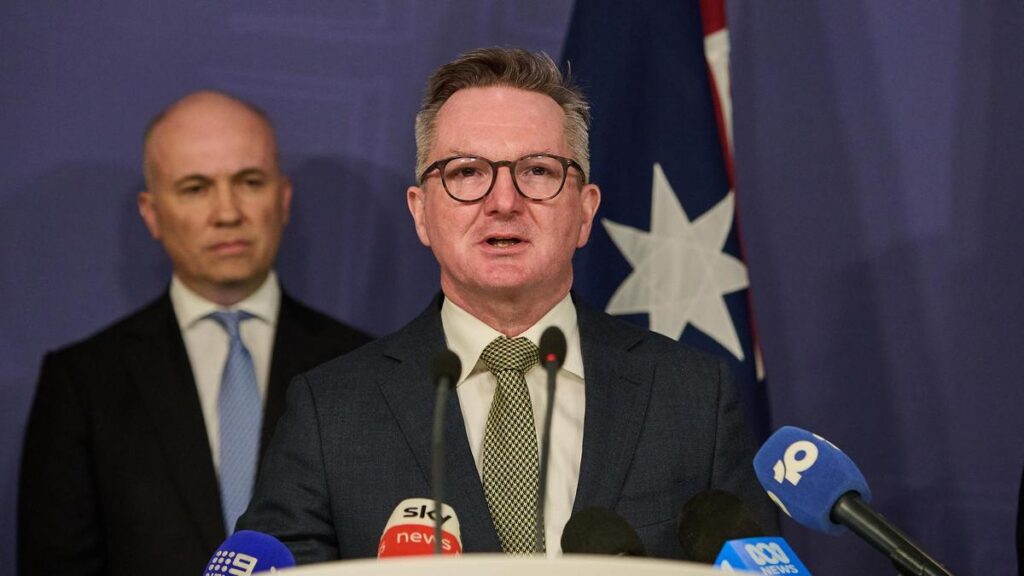Agriculture is being called upon to do the heavy lifting after the Albanese Government announced its “ambitious but achievable” 2035 climate target of 62-72 per cent.
But farmers have mixed thoughts about the goal, which is mandated by Australia’s participation in the Paris climate agreement and builds on existing emissions reduction policies.
The Albanese Government outlined its first National Climate Risk Assessment and Adaptation Plan last week but failed to lay out how much public money would be is needed or the cost to make the changes required.
It also released its long-awaited decarbonisation policy for agriculture, revealing the Government’s desire for the sector to slash its production emissions, boost on-farm nature repair and turbocharge carbon storage.
The Agriculture Land and Sector Plan was one of six sectoral emissions reduction plans released, saying dryland agriculture would continue to be challenged by rainfall variability and extreme heat — reducing soil moisture and crop yields.
Climate Change Minister Chris Bowen said everyone needed to “lean in” to reducing the nation’s climate emissions — by buying electric vehicles, installing household batteries, and updating factory equipment — if the country was to achieve the new goal.
“Agricultural decarbonisation must be achieved with the sector, not imposed on the sector,” he said.
“We can only achieve our shared climate goals through partnership and collaboration.”
The 62-72 per cent target has come under fire from environmental groups and social advocates for being too low while the Opposition has attacked the Government for failing to detail the impact on power prices.
Meanwhile, the resources and renewable energy sectors have warned the nation has no chance of meeting the new targets unless environmental approval laws are overhauled, and quickly, with developments needed to get critical minerals vital to clean technology currently being held back by slow approval processes.
The goal is more ambitious than targets set by Canada or New Zealand, but falls well short of the UK’s 81 per cent on 1990s levels (about 78 per cent on 2005 levels).
The EU is reportedly considering setting a target range similar to Australia.
WA-based AgZero chief executive Verity Morgan-Schmidt said any pathway to emissions reduction needed to be done “with” rather than “to” the agriculture industry.
“The science tells us clearly that we need to move quickly to cut emissions to have any hope globally of cutting emissions,” she said.
“We need to do that in a way that works for farming communities … I think it is also very important to note the Australian sector is doing a really good job at reducing emissions.
“The message to farmers would be that climate change presents significant risks to WA ag, but climate solutions present significant opportunities … we are squarely in the driving seat here, and we need to engage with what the science is telling us.”
Opposition Leader Sussan Ley said the Coalition was “dead against” the target, but did not reveal what the Liberal-National Government would instead put forward.
She rejected the modelling and said the Government’s “credibility is in tatters”, in part because it assumed Australia’s 2030 target of a 43 per cent cut would be met “when clearly it will not be”.
Australia is on track to cut emissions by 42.6 per cent by 2030.
“There is nothing in this announcement that demonstrates to Australians how much it will cost, and that’s not reasonable for households, for businesses, for the hard-working manufacturers in this country who want answers and are seeing their electricity bills skyrocket,” Ms Ley said.
Environmental groups were pushing for Australia to adopt at least a 75 per cent cut — some advocated for a net zero by 2035 position — but Mr Bowen said that wasn’t achievable.
https://thewest.com.au/countryman/politics/agriculture-called-on-for-emissions-reduction-heavy-lifting-as-albanese-government-releases-climate-target–c-20114203


